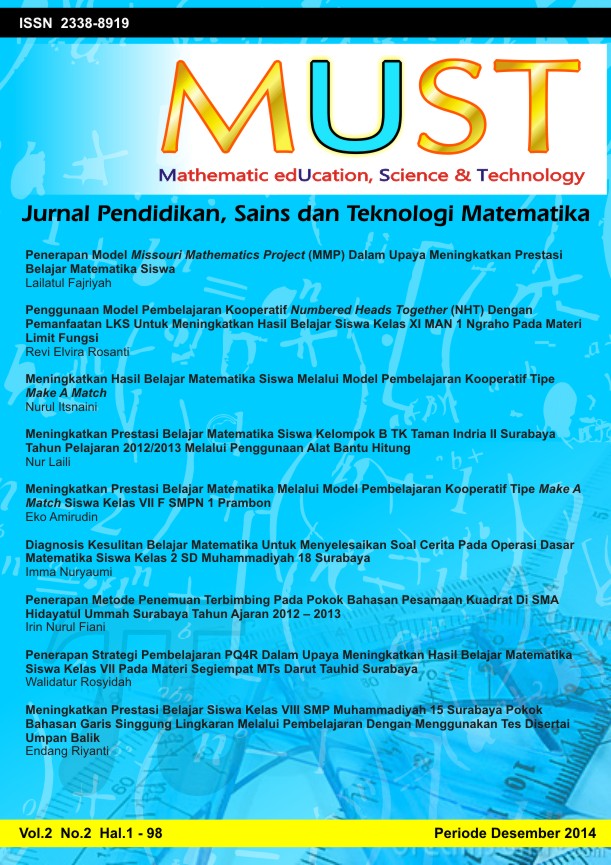Meningkatkan Prestasi Belajar Matematika Melalui Model Pembelajaran Kooperatif Tipe Make a Match Siswa Kelas VII F SMPN 1 Prambon
Abstract
Penelitian ini menerapkan model pembelajaran kooperatif tipe make a match. Pembelajaran kooperatif merupakan model pembelajaran yang menitikberatkan pada pengelompokan peserta didik dengan tingkat kemampuan akademik yang berbeda ke dalam kelompok-kelompok kecil. Sedangkan make a match merupakan salah satu tipe model pembelajaran kooperatif yaitu dengan cara membuat pasangan belajar pada setiap siswanya. Penelitian ini merupakan penelitian tindakan kelas yang dilaksanakan dalam 2 siklus. Subyek penelitian adalah siswa kelas VIIF semester 2 SMPN 1 Prambon tahun pelajaran 2012/2013. Hasil penelitian menunjukkan rata-rata persentase aktivitas siswa meningkat dari 65,76 % siklus I menjadi 75,17 % siklus II dan rata-rata hasil belajar peserta didik meningkat dari 74,56 dengan persentase hasil belajar klasikal 72,2 % menjadi 80,06 dengan persentase hasil belajar klasikal 91.7 %.
Full text article
References
Arikunto, Suharsimi. 2009. Dasar–Dasar Evaluasi Pendidikan Edisi Revisi. Jakarta : Bumi Aksara.
Suprijono, Agus. 2009. Cooperative Learning. Yogyakarta:Pustaka Pelajar.
Authors
Authors who publish with this journal agree to the following terms:
- Authors retain copyright and grant the journal right of first publication with the work simultaneously licensed under a Creative Commons Attribution-NonCommercial 4.0 International License that allows others to share the work with an acknowledgment of the work's authorship and initial publication in this journal.
- Authors are able to enter into separate, additional contractual arrangements for the non-exclusive distribution of the journal's published version of the work (e.g., post it to an institutional repository or publish it in a book), with an acknowledgment of its initial publication in this journal.
- Authors are permitted and encouraged to post their work online (e.g., in institutional repositories or on their website) prior to and during the submission process, as it can lead to productive exchanges, as well as earlier and greater citation of published work

